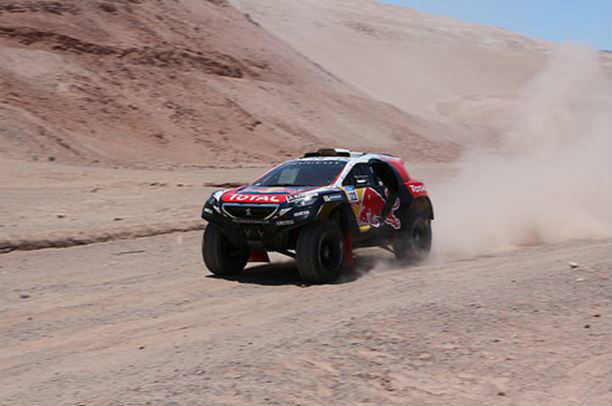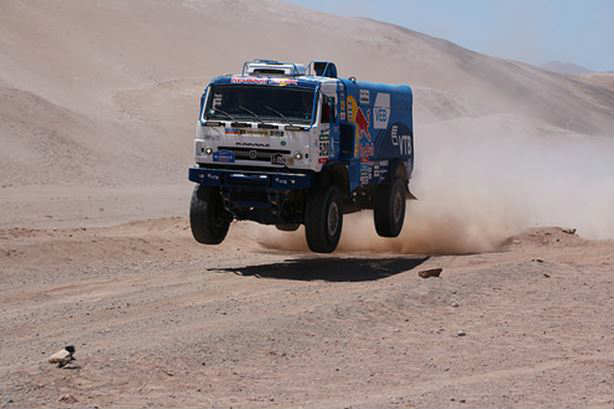The Dakar Rally is one of the most famous motor races in the world. Since its inception in 1978, the rally has attracted participants and fans from all over the world. Despite the inclusion of “rally” in the name, the Dakar Rally is actually an off-road endurance race. It is something that is actually known as “rally raid” rather than a truly conventional rally. Drivers inflict themselves to far more treacherous terrain – crossing dunes, mud, camel grass, and rocks can all be expected on the route – than a normal rally. This means that these guys compete in off-road vehicles rather than the modified on-road vehicles that are used in rallies. This year’s event saw the drivers endure 9,000 km of horrific surface.
In its original form, the Dakar Rally was a 10,000 km slog from the French capital of Paris to the country’s former colony of Senegal, finishing at capital city Dakar. The race is the brainchild of Thierry Sabine, a motorist who decided that the Tenere desert was a good place to hold a rally having got lost there during the Abidjan-Nice rally in 1977. The first contest in 1978 saw 182 vehicles depart with only 74 surviving. It was almost instantly clear that Sabine was on to something special with this rally. By 1982 the amount of competitors had doubled to 382. When the sport was at its peak in 2004 the race attracted a staggering 595 entrants.

Although originally being a race from Paris to Dakar, the race has changed markedly over time. The original route from France meant travelling south into Spain from where you would cross the Strait of Gibraltar and into Morocco, continuing west to the Western Sahara and on into Mauritania and Mali, before finally heading into Senegal and within relative touching distance of Dakar. However, this route is no longer operational. In 2006, the start line was moved to Lisbon, Portugal. But the biggest upheaval came in 2008 when the event was cancelled completely due to fears of possible terrorist attacks in Mauritania following the murder of four French nationals in late-2007. With fears still concerning the safety of the original Dakar route, it was imperative that the governing body found the iconic event a new home. This was a task made easy by Chile and Argentina, who both reached out and offered to host the rally. They have continued to do so every year since 2009.

For British people of a certain age, the Dakar Rally will always be synonymous with the disappearance of Mark Thatcher, the son of then-Prime Minister Margaret Thatcher, in 1982. It was one of the rare few times where the British public got to see Mrs Thatcher visibly shaken. But thankfully the Iron Lady’s son turned up six days later after she financed an extensive rescue team to unearth him.
What makes the event such compelling viewing is that it is extremely hard to predict. Managing to pull off a winning bet on the Dakar Rally certainly takes some doing. The unpredictability of whether a driver is going to get lost or that the vehicle will simply disintegrate makes the race far harder to call than other forms of motorsport betting, but it does make it far more exciting. There have been five different winners in the seven years the race has been going in South America. The most recent was Morocco’s Nasser Al-Attiyah, who claimed his second title.

In regards to overall success, with 50 stage victories and four overall Dakar successes, Ari Vatanen, who also has a World Rally Championship (1981) to his name, has won the most amount of stages of any car driver in the race’s history. Cyril Despres is the most successful motorbike competitor, Vladimir Chagin is the undisputed don of the trucks, and Marcos Patronelli currently sits on top of the quad section.
However, the most talented person to take to the competition has to be Stephane Peterhansel. Although he doesn’t sit top of any one category, he does occupy second place in both motorbikes and cars with 33 and 32 stages, respectively. His total 65 stage successes are, however, a record. After dominating the motorbike category in the 1990s, he won the rally on six occasions, he moved over into cars in 1999, where he has gone on to win a further five titles. That is a dominance that even puts Michael Schumacher to shame.
Next year’s Dakar Rally will go through Peru, Bolivia, and Argentina and will commence in the first few days of January.
Support InfoStride News' Credible Journalism: Only credible journalism can guarantee a fair, accountable and transparent society, including democracy and government. It involves a lot of efforts and money. We need your support. Click here to Donate
